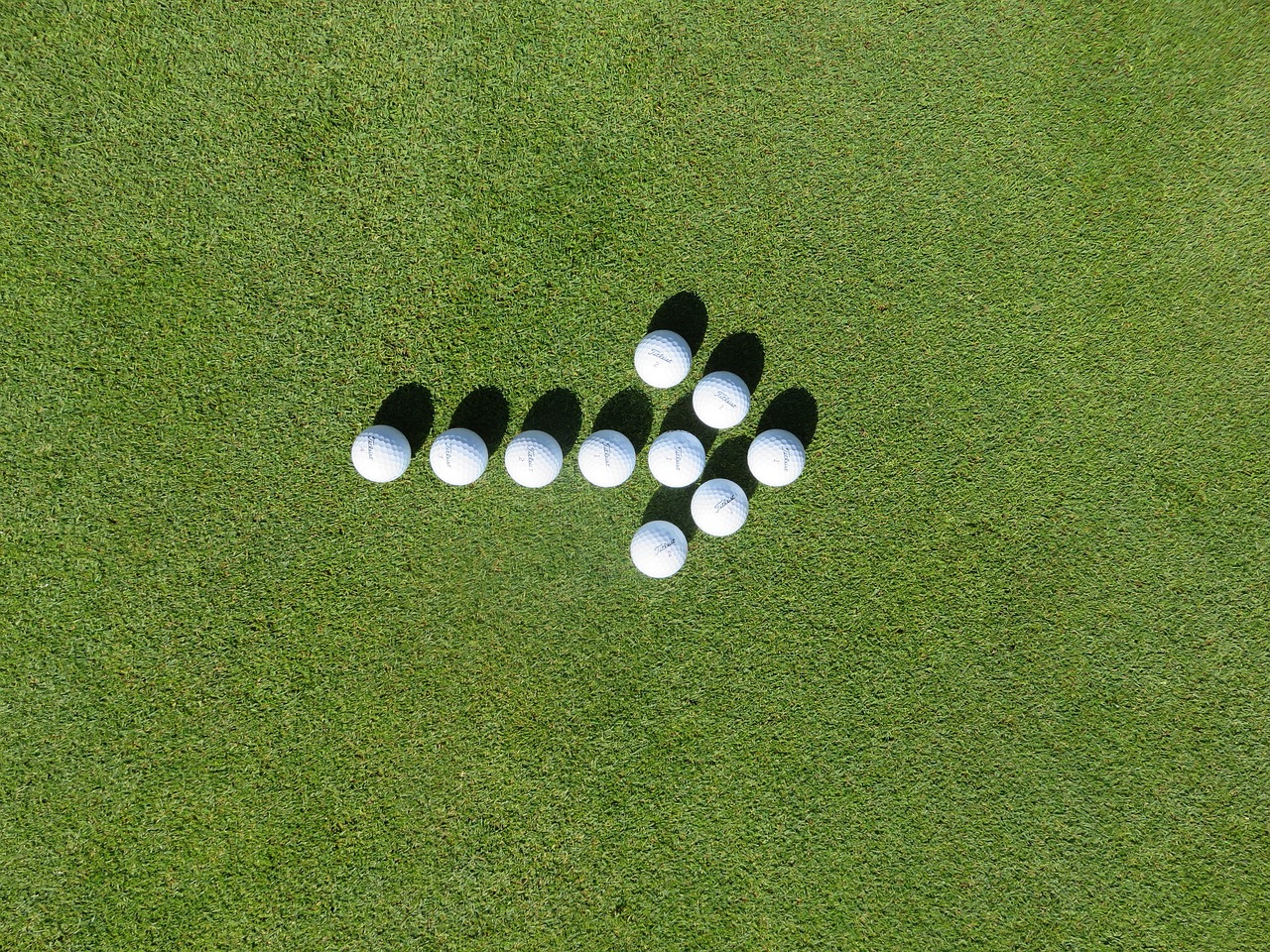
Demystifying Golf Rules: Common Misunderstandings And Clarifications
Have you ever found yourself confused about the rules of golf? Whether you’re a seasoned player or just starting out, it’s common to come across some misunderstandings about the game. That’s why we’ve put together this comprehensive article, “Demystifying Golf Rules: Common Misunderstandings and Clarifications.” Designed to educate and inform people of all ages interested in golfing, this long-form article will provide you with the clarity you need to navigate the golf course with confidence. From the basics of tee-off to complex scenarios on the green, we’ll break down the rules in a way that even a 9th grader can understand. So, let’s tee up and dive into the world of golf rules!
Demystifying Golf Rules: Common Misunderstandings and Clarifications
Table of Contents
- Out of Bounds and Lost Ball 1.1 Definition of Out of Bounds 1.2 Procedure for Lost Ball
- Teeing Ground 2.1 Proper Teeing Ground 2.2 Teeing Off Outside the Teeing Ground
- Water Hazards 3.1 Identifying a Water Hazard 3.2 Options for Playing from a Water Hazard
- Hazards and Penalty Areas 4.1 Differentiating Hazards and Penalty Areas 4.2 Procedures for Playing from Hazards and Penalty Areas
- Ball at Rest 5.1 Definition of Ball at Rest 5.2 Interference with a Ball at Rest
- Lifting, Dropping, and Placing the Ball 6.1 Lifting a Ball 6.2 Dropping and Re-Dropping the Ball 6.3 Placing a Ball
- Unplayable Lies 7.1 Declaration of Unplayable Lie 7.2 Options and Procedures for Playing an Unplayable Lie
- Obstructions and Abnormal Ground Conditions 8.1 Identifying Obstructions 8.2 Identifying Abnormal Ground Conditions 8.3 Procedures for Interference by Obstructions and Abnormal Ground Conditions
- Order of Play and Etiquette 9.1 Establishing Order of Play 9.2 Etiquette on the Golf Course
- Scoring and Penalties 10.1 Understanding Golf Scoring 10.2 Common Penalties in Golf
Out of Bounds and Lost Ball
Definition of Out of Bounds
Out of Bounds refers to areas on the golf course where a player’s ball should not go. These areas are usually marked by white stakes or boundary lines. If your ball lands in an out of bounds area, you incur a penalty stroke, and you must play your next shot from where you last played. It is important to be aware of the out of bounds areas on the course to avoid unnecessary penalties and potential loss of your ball.
Procedure for Lost Ball
Sometimes, despite your best efforts, you may lose sight of your ball and be unsure of its location. In such cases, the Lost Ball rule comes into play. If you cannot find your ball within three minutes of searching, it is considered lost. You must then declare your ball lost and incur a penalty stroke. You should proceed to the spot where you last played and play your next shot from there. Losing a ball can be frustrating, but following the correct procedure will help maintain fairness and accuracy in the game.
Teeing Ground
Proper Teeing Ground
The teeing ground is the designated area to start each hole. It is typically indicated by markers or tee markers. When teeing off, you must ensure that you tee up your ball within this area. The tee markers help determine the boundaries of the teeing ground, and your ball must be within those markers. Properly positioning yourself within the teeing ground ensures fairness and consistency for all players.
Teeing Off Outside the Teeing Ground
Teeing off outside the teeing ground is a common mistake among golfers. It is important to understand that if you hit your ball outside the teeing ground, it is considered a penalty and you must re-tee your ball correctly within the designated area. Teeing off outside the teeing ground may result in improper positioning, distance discrepancies, and potential confusion for both players and officials. To avoid penalties, always double-check that you are teeing off from the correct area.
Water Hazards
Identifying a Water Hazard
Water hazards play a significant role in golf as they provide additional challenges to players. A water hazard is any body of water on the course, marked with yellow stakes or lines. These hazards can include lakes, ponds, or streams.

Options for Playing from a Water Hazard
When your ball comes to rest in a water hazard, you have three options for playing your next shot. Firstly, you can play the ball as it lies in the water hazard, keeping in mind that you are not allowed to ground your club or remove loose impediments. Alternatively, you can take a penalty stroke and drop a ball behind the water hazard, keeping the point where your original ball last crossed the hazard between the hole and the spot where you drop the ball. Finally, if the water hazard is marked as lateral, you have the option to drop a ball outside the hazard within two club-lengths of where the ball last crossed the hazard, but no nearer to the hole. Understanding these options will help you make informed decisions and minimize the impact of water hazards on your game.
Hazards and Penalty Areas
Differentiating Hazards and Penalty Areas
Hazards and penalty areas are often confused terms in golf, but they have distinct characteristics. Hazards, typically marked by yellow stakes or lines, include water hazards and bunkers. On the other hand, penalty areas, marked by red stakes or lines, encompass a wider range of areas, such as areas of desert, dense vegetation, or areas with challenging terrain. Understanding the difference between hazards and penalty areas is crucial for determining the appropriate rules and penalty strokes associated with each, enabling fair and accurate play.
Procedures for Playing from Hazards and Penalty Areas
When your ball lands in a hazard or penalty area, specific rules dictate how you should proceed. For hazards, such as water hazards, you have the option to play the ball from its original location, but you must adhere to the restrictions concerning club grounding and loose impediments. Alternatively, you can take a penalty stroke and drop the ball outside the hazard, following certain guidelines. When dealing with a penalty area, you have the choice to play the ball as it lies or proceed with penalty strokes. Knowing the proper procedures for playing from hazards and penalty areas allows you to navigate challenging situations on the course with confidence and fairness.
Ball at Rest
Definition of Ball at Rest
A ball at rest refers to a stationary golf ball on the course. When your ball comes to a complete stop, it is considered at rest. Recognizing a ball at rest is important in order to follow the rules regarding interference and penalties associated with interfering or moving the ball improperly. Understanding the concept of a ball at rest helps maintain the integrity of the game and ensures fair play for all participants.
Interference with a Ball at Rest
Once a ball has come to rest, there are rules in place to protect its position and prevent interference from players, equipment, or any other external factors. It is essential to avoid intentionally moving or disturbing a ball at rest unless allowed by the rules. If your ball is accidentally moved or interfered with, you may incur a penalty, depending on the circumstances. Respecting the status of a ball at rest promotes fair play and upholds the principles of the game.
Lifting, Dropping, and Placing the Ball
Lifting a Ball
In certain situations, you may need to lift your ball to clean it or when you are entitled to relief. When lifting a golf ball, it is important to follow the proper procedures to avoid penalties. Begin by marking the position of your ball with a tee or ball marker. Then, using your hand or an approved tool, lift the ball off the ground. Remember to replace the ball in the same position, ensuring fairness and accuracy in play.
Dropping and Re-Dropping the Ball
Dropping the ball correctly is crucial to comply with the rules and avoid penalties. When dropping the ball, you should hold it at shoulder height and extend your arm fully so that the ball falls within the designated drop zone. It should not touch any part of your body or equipment before hitting the ground. If the ball doesn’t come to rest within the drop zone, it must be re-dropped following the same guidelines. Dropping and re-dropping the ball accurately ensures fairness in the game.
Placing a Ball
Sometimes, you may be allowed to place your ball on a specific spot on the course, such as when taking relief or after a ball has been marked and lifted. When placing the ball, hold it just above the ground and position it so that it remains at rest on that spot. Avoid rolling or spinning the ball while placing it. Placing the ball correctly ensures consistency and maintains fairness in play.
Unplayable Lies
Declaration of Unplayable Lie
An unplayable lie occurs when your ball is in a position that makes it impossible or extremely challenging to play a shot. You have the option to declare an unplayable lie and incur a penalty. To do so, you must announce your intention to do so, with the ball in play, before proceeding with the applicable options. Declaring an unplayable lie gives you the opportunity to take relief or use specific procedures to improve your position. Understanding when to declare an unplayable lie is essential to enhance your gameplay and prevent unnecessary frustration.
Options and Procedures for Playing an Unplayable Lie
When facing an unplayable lie, you have three available options. Firstly, you can go back to where you last played the shot and replay it, incurring a one-stroke penalty. Secondly, you can drop a ball within two club-lengths of the spot where your ball lies, no nearer to the hole, also incurring a one-stroke penalty. Lastly, you can drop a ball behind the point of entry into the hazard, keeping the point of entry and the hole in line. Understanding your options and the associated penalties allows you to make a strategic decision based on the circumstances and improve your chances of successful play.
Obstructions and Abnormal Ground Conditions
Identifying Obstructions
Obstructions are objects or structures that may impede your play on the golf course, such as buildings, fences, or power lines. Identifying obstructions is important to determine the appropriate course of action when your ball is near or in contact with them. If your ball is in an obstructed situation, you have the option to take relief without penalty. Knowing how to identify obstructions ensures fair play and enables you to adapt your strategy accordingly.
Identifying Abnormal Ground Conditions
Abnormal ground conditions refer to areas on the course that have been significantly damaged or altered, making it difficult to play a shot. Examples include areas marked with ground under repair signage, casual water, or areas affected by construction.

Procedures for Interference by Obstructions and Abnormal Ground Conditions
When faced with an obstructed shot or an abnormal ground condition, specific procedures address your options for relief. You may opt to take free relief by dropping the ball within one club-length of the nearest point of relief or within one club-length of a reference point, depending on the situation. Additionally, you may be entitled to penalty relief if the interference occurs on the putting green. Understanding the procedures for interference by obstructions and abnormal ground conditions allows you to navigate challenging environments while maintaining the spirit of fairness in the game.
Order of Play and Etiquette
Establishing Order of Play
Maintaining proper order of play on the golf course is crucial to ensure a smooth and enjoyable experience for all players. The order of play is typically determined by the honor system, with the player who achieved the lowest score on the previous hole teeing off first on the next hole. The subsequent order is based on the scores achieved on the previous hole. Understanding how to establish the order of play promotes efficiency, courtesy, and a positive atmosphere on the golf course.
Etiquette on the Golf Course
Etiquette plays a significant role in golf and contributes to a pleasant and respectful atmosphere for all players. Practicing good golf etiquette involves several factors, such as maintaining a reasonable pace of play, repairing divots, raking bunkers, and being aware of others on the course. It is also important to remain quiet and avoid unnecessary distractions while other players are taking their shots. Being mindful of golf etiquette not only enhances the experience for yourself but also for other players, allowing everyone to enjoy their time on the course.
Scoring and Penalties
Understanding Golf Scoring
Understanding the scoring system used in golf is essential to keep track of your performance accurately. In traditional stroke play, the objective is to complete each hole using the fewest number of strokes possible. Your score for each hole is the total number of strokes plus any penalties incurred. At the end of the round, the total strokes are tallied to determine your final score. Familiarizing yourself with the scoring system enables you to assess your progress and set goals for improvement.
Common Penalties in Golf
Throughout your golfing journey, it is important to be aware of the common penalties that may be incurred while playing.

By understanding and clarifying these common misunderstandings in golf rules, you’ll be better equipped to navigate the course, make informed decisions, and enjoy the game to its fullest. Remember, golf is not only about skill but also integrity, etiquette, and sportsmanship. Have fun, embrace the challenges, and let the rules of the game guide you towards a rewarding golfing experience.




